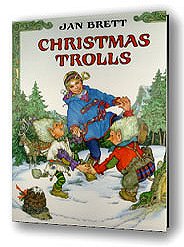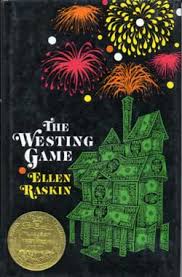Illustrated By : Greystroke
Age Group : 4-8 years
A set of 4 books, subtitled as "Fun Conversations about Everyday Science", which I came across by chance while browsing the shelves in Pratham Books office cum sales center.
In these books, an inquisitive little boy asks his elder sister many questions and the sister encourages him to think first what could be the reason of these things happening a certain way? He tries to think of all possible reasons from his understanding of the world, which is mainly based on the stories he must have heard from here and there.
 Sister, Sister Why Is The Sky So Blue? The little brother thinks that one old lady lives on the sky and washes her big blue saree everyday and then spreads it over the sky and puts the cloud stones on top so that the wind does not carry it away(I specifically liked the explanation of clouds on the sky as stones). Or is it a sea - upside down, but how is the water held up in an upside down position? You will have to read it to find the amazing explanation!
Sister, Sister Why Is The Sky So Blue? The little brother thinks that one old lady lives on the sky and washes her big blue saree everyday and then spreads it over the sky and puts the cloud stones on top so that the wind does not carry it away(I specifically liked the explanation of clouds on the sky as stones). Or is it a sea - upside down, but how is the water held up in an upside down position? You will have to read it to find the amazing explanation!  Sister, Sister Where Does Thunder Come From? He thinks that the old lady living on the sky does not allow the children of her children to play, so they grumble. But later they start the game of chaupad, which they spread across the whole sky. The clapping of happy children and the rolling of giant dice make all the sounds of thundering. If not this, then angry roaring of Kumbhakarana, whose sleep got disturbed, must be the reason behind the thundering sound or may be the fancy bikers' are responsible for the thunder. But what are these fancy biker's doing high up there?
Sister, Sister Where Does Thunder Come From? He thinks that the old lady living on the sky does not allow the children of her children to play, so they grumble. But later they start the game of chaupad, which they spread across the whole sky. The clapping of happy children and the rolling of giant dice make all the sounds of thundering. If not this, then angry roaring of Kumbhakarana, whose sleep got disturbed, must be the reason behind the thundering sound or may be the fancy bikers' are responsible for the thunder. But what are these fancy biker's doing high up there? After he has explored all possible flights of his imagination, his sister does tell him whatever she has read in the books, trying to explain the physical phenomena - scattering of light, rotation of earth, gravity and thundering, in a simple way.
While reading these books to my children, I found it a good time to ask them what do they think. A great opportunity to peep into their minds, and to accompany them in their pursuit of finding answers to such queries. While teaching them the routine stuff, we tend to overlook the significance of free flow of thoughts, not bothering about the correctness of the same that much.
On the last page there are simple experiments explained to show the phenomena.
Illustrations are beautiful with bright colours and even the manner in which the text is printed on the pictures is interesting and blends with the pictures very well. Some pages are simply medley of vibrant colours put together by bold strokes of brush - a delight to the eyes.



























